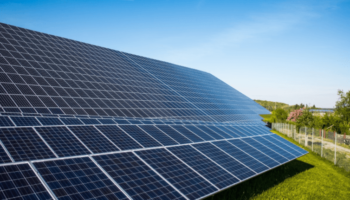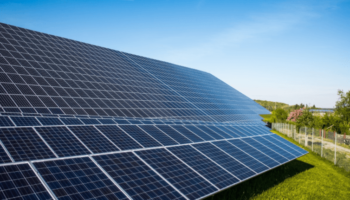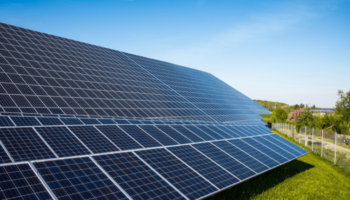
Economic Benefits Of Renewable Energy – Clean Energy Economy
Renewable energies have dramatically risen in popularity due to major solar investments and global governmental attempts to counter climate change, evidenced by the Paris Climate Change Conference. There, the majority of the major nations in the world agreed to pursue attempts to limit the temperature increase to 1.5 degrees Celsius, which will demand zero emissions, sometime between 2030 and 2050.
Meeting that zero-emissions goal will need an ample integration of renewable energy into our societies, a process that’s already continuing, albeit slowly. Renewable energy will benefit the environment, but many also wonder about its economic effect. A continuing rise in renewable energies may have several impacts on the actions of national and state authorities, with several financial advantages.
A Brief History Of The Green Economy
The notion of a more sustainable market has been discussed for decades. An Integral moment was the publication of the report “Limits to Growth” from the Club of Rome in 1972. In the last few years discussion around sustainability is now an integral part of the global schedule. This is only because the latest scientific studies and our direct experiences of environmental degradation and climate change are making it clear the economic model should change. The green economy has been the fundamental theme of the major United Nations convention on Sustainable Development (Rio+20) held in Rio in June 2012. Key events over the last few decades:
- Rio Earth Summit1972 Stockholm conference
- 1987 Brundtland Report
- 1992 Earth Summit and Agenda 21
- 2012 Rio+20 conference
How Does Green Economy Differ From Prior Efforts To Promote Sustainability - What's New?
In many ways, Green Economy simply encourage those already articulated for the broader goal of sustainable development. But this new framing responds to two recent developments.
To begin with, there’s a deeper appreciation today by many authorities, companies, civil society and the public that we are reaching planetary limits, not just concerning greenhouse gas emissions but also in our usage of land, water, forests and other organic resources. The ecological and social costs of our current economic model are becoming more and more evident.
Secondly, and perhaps more important, the global recession has resulted in a reconsideration of key tenets of the present financial model, such as the primacy of expansion and the belief in light-touch regulation.
Past sustainability efforts have not focused sufficiently on repairing the failures of economic policies like pricing pollution. But we finally have a chance to tackle these challenging problems given the coverage openings produced by the answer to the fiscal crisis. A fantastic example is Korea’s adoption of a nationwide green expansion strategy.
What Are The Economic Benefits Of Solar Energy?
Job Growth
In the previous five decades, solar energy jobs have doubled, a direct comparison to gas and oil companies — that cut 17,000 extraction jobs last year. Additionally, salary in the solar energy sector continue to grow. Colorado, California, New York and Arizona in particular have seen booming solar power industries rise and offer a surplus of fresh occupations. At a time where unemployment has made 2.6 million Americans who are seeking a job unable to locate one, a brand new job-creating industry that will nonetheless be relevant decades from now is certainly a positive thing.
The International Renewable Energy Agency projects that the renewable energy sector could sponsor 24.4 million projects in 2030, as a result of the labor-intensive nature of the renewable energy process. Renewable energy’s potential to grow across all kinds of technologies gives it enormous potential, with the hydropower, bioenergy and solar power businesses all being choices. Future and current jobs include handling fuel installations and supplies and the manufacturing of gear.
Impact on GDP
Research by the International Renewable Energy Agency have found a very promising Potential for the United States’ GDP. Their report says that “decreasing the share of renewables in the world energy mix by 2030 will increase global GDP by up to 1.1 percent, or USD 1.3 trillion. This positive amount is mainly derived from the possibility of renewable energy installation investments, which will have positive ripple effects throughout the economy. This projection may even be lower than what will occur, if there is a greater speed of electrification.
Renewable energy’s potential positive influence on welfare will also positively affect the GDP, together with IRENA also projecting that doubling renewable shares by 2030 would increase welfare opportunities by 2.7 percent and increase the GDP into a 0.6% growth. A approximately $1.3 trillion increase of GDP by 2030 would have a positive effect on a variety of environmental and social issues together with the rise in renewable energy usage and decrease of fossil fuels.
Reduction of Greenhouse Gas Emissions and Energy Consumption
Greenhouse gas emissions have a variety of damaging environmental effects presenting health dangers, as well as eco-systems agriculture disruptions.
All these greenhouse gas emissions come from burning fossil fuels, which many around the world still use for heat, electricity and transportation. The continuing shift from fossil fuels to renewable energy may effectively counter these dangerous environmental effects. Being proactive in this strategy is going to result in less economical strain down the line for an issue that is unavoidable.
Save Companies in Energy Costs
Beyond the large government, private businesses can also benefit from shifting to renewable energy.
Alternative energies like solar, wind, and compressed air offer major savings points and may be utilized in almost any industry. Compressed air systems specifically can typically save companies 20-30% in energy costs. Combine this with another alternate energy, particularly one with government incentives, and your business can substantially lower operating costs while boosting your environmental conservation to customers.
Public Health and Economic Improvements
With fossil fuels being linked to neurological damage, heart attacks, cancer and breathing issues, cutting down on and limiting fossil fuels are an understandable priority as wind, hydroelectric and solar-generated electricity provide electricity without the harmful air pollution emissions of fossil fuels. Fossil fuel health harms already account for between 2.5 and 6% of the GDP, a number that renewables can bring down significantly.
Clean Energy Economy - How Do We Get There?
A new report from the Risky Business Project presents three main pillars for transitioning into a clean energy economy:
Using electricity instead of fossil fuels including a gradual transition to electric automobiles; switching to electric heat pumps and water heaters within our homes; and converting more industrial methods to use electricity instead of burning fossil fuels. We can also use electricity to produce clean-burning hydrogen for transportation and industry.
Generating electricity from low- and zero-carbon sources. The cost of renewable electricity has fallen dramatically in the last decade, paving the way for rapid expansion of zero-carbon resources like solar and wind energy.
Use all energy better. We can get greater output from each unit of energy we utilize by applying the most efficient technologies in our homes, vehicles and factories. The new Risky Business analysis demonstrates we’ve got the tools now to get there, and we are bound to see extra discoveries in the future to make the work easier.
What Are The Advantages And Disadvantages Of Renewable Energy Sources?
Benefits Of Green Energy - What Are The Renewable Energy Benefits?
- It is safe, abundant, and clean to use compared to fossil fuels.
Even clean-burning all-natural gas is at a disadvantage to what renewable energy resources can provide. Enough sunlight comes down on our world every day that if we can harvest it using solar panels and other kinds of collection, we can power everything for a whole year. Because wind is created by the heat of sunlight, it is also virtually infinite. Fossil fuels, in theory, are a finite resource because of how they are created.
- Greater diversity within this sector when compared to fossil fuel resources.
Diversification within the renewable energy industry has exploded in the 1970s. From dams offering hydropower to solar strips which are powerful enough to handle the weight of a car and may be turned into roads, we have numerous procedures of creating power through the collection of renewable energy. There is much greater diversity within this sector when compared to fossil fuel resources.
- It provides the foundation for energy independence.
Many countries rely on fossil fuels in order to function under the “contemporary” definition. These fuels come from a handful of states that work to control availability and pricing. By developing renewable energy sources, countries can work toward energy independence with a diversified portfolio of electricity to access. Even though these resources take time to develop, it needs to be recalled that the present fossil fuel infrastructure has more than a century of growth behind it.
- Renewable energy is stable.
When renewables are generating energy, the power produced is stable and usable, just as with any other sort of “traditional” power. It is a dependable resource as soon as an infrastructure is available to support it. Jobs are made inside the industry as well, producing stability inside local financial sectors at precisely the same moment. The power generated can be distributed through existing grids, which can restrict installation prices for a few communities.
- it’s a technology instead of a fuel.
Coal must be mined and refined to make it useful. Natural gas must be discharged and transported. A fossil fuel is created from natural sources, whereas renewable energies have been created thanks to the use of technologies. Because of this, the pricing of renewable energies will continue to go down as advances in technology occur. Fossil fuels can see cost reductions through mining and refining efficiency improvements, but there will always be an underlying labor cost that will affect availability and pricing.
What Are The Disadvantages Of Renewable Energy?
- Not every form of renewable energy is commercially viable.
Many kinds of renewable energy has to be accumulated at a specific location, which means distribution systems must be setup to make the most of the electricity which may be generated. From tidal authority to geothermal, the commercial viability of many renewable energy sources is not accessible right now.
- Renewable energy is often location-specific.
Even solar energy has limited potential in some locations. Since renewable energy is often location-specific, it might not be accessible for each and every community to utilize.
- Renewable energy demand storage capacities.
With traditional power resources, a home or business is connected to a local supply grid so that it could be accessed at any time. When utilizing a renewable energy resource, storage and back-up resources must be included with the energy generation prospect. Sunlight doesn’t happen at night. Wind speeds are not always consistent. The storage capabilities that are required can induce the price of a new renewable energy system beyond what the normal individual or community are able to afford.
- Pollution is still created with renewable energy.
Renewable energies tend to be cleaner than many fossil fuels, but “cleaner” and “clean” are very different conditions. A source like biomass still burns waste products and puts pollution into the air. The technologies and facilities which are utilized to construct renewable energy resources need fossil fuels, as do the transport and distribution systems.
- Some forms of renewable energy demand a massive quantity of space.
To produce 20 megawatts of electricity, present solar technologies demand 100 acres of space. In comparison, the footprint for a nuclear energy plant is just 1 square mile to create 1,000 megawatts of energy. Solar is hence 45 times less space efficient compared to nuclear power. Solar is much worse, requiring up to 360 square miles to create exactly the exact same energy as one nuclear power plant.
10 Companies Taking Advantage Of Renewable Energy
Each year the United States Environmental Protection Agency (EPA) puts together a list of the best 100 companies that associate with their program Green Power Partnership. They estimated in 2014 a total of 24 billion kilowatt-hours from all their partners combined.
For this list we looked at the particular companies on the list which are “100% Green Power Users” who’s reduction of carbon emissions is equivalent to the electricity use of 1.1 million American families independently.
So let us take a closer look at these top ten companies taking advantage of renewable energy resources.
Intel Corporation
Intel links its passion for the environment and renewable energy back to their own founder Gordon Moore. They set a standard to decrease energy consumption by 4% per unit every year and constantly meet this by creating new conservation endeavors that they implement worldwide throughout facilities.
Kohl’s Department Store
Kohl’s pledges to utilize renewable energy in attempt to counteract their traditional energy use throughout the country. Since the EPA only reports solar power, Kohl’s claims to additionally starting using wind turbines in 2011 in Texas and Ohio as analyzing sites.
Whole foods
Whole foods has a “green mission” and claims to be the first large merchant to use 100% of the energy with wind credits, which we are now able to see has also moved onto with solar energy credits throughout the authorities as well.
Staples
Not only does Staples have over a 100% green power but they have a renewable paper procurement policy and encourage responsible managing of forests. The company has joined up with Energy Star to make more energy efficient buildings nationwide.
Unilever
Unilever sells everyday life brands all around the world for example Axe, Lipton, and Wall’s. They plan to find more renewable resources such as biofuels and to decrease the greenhouse emissions each of the brands places out.
TD Bank, N.A.
“Be green as our logo” is the new slogan for renewable energy over at TD Bank who generated the very first net-zero energy lender in the US via solar panel instillation. They are currently the largest bank to become carbon neutral and works towards Leadership in Energy and Environmental Design standard approval.








